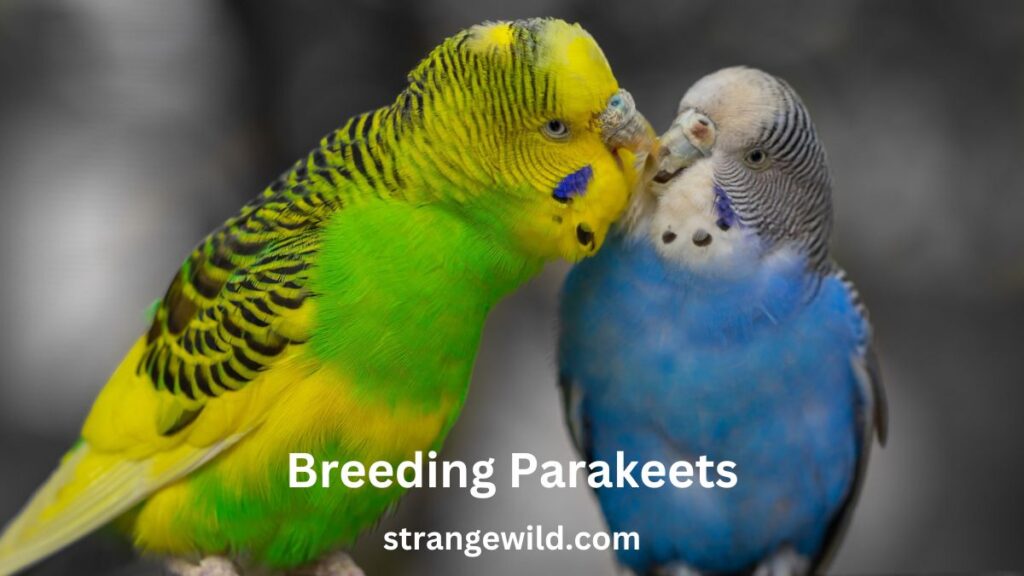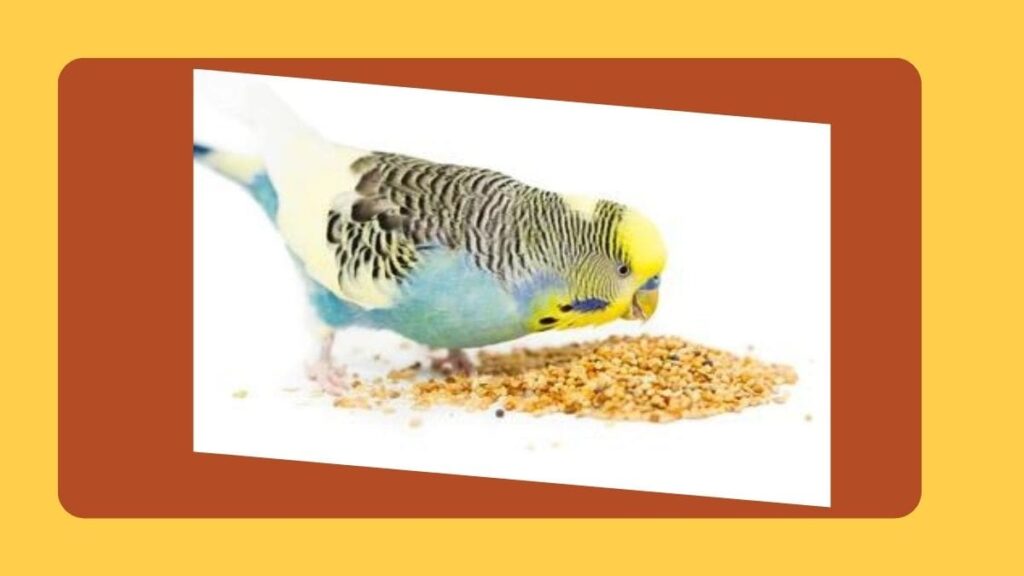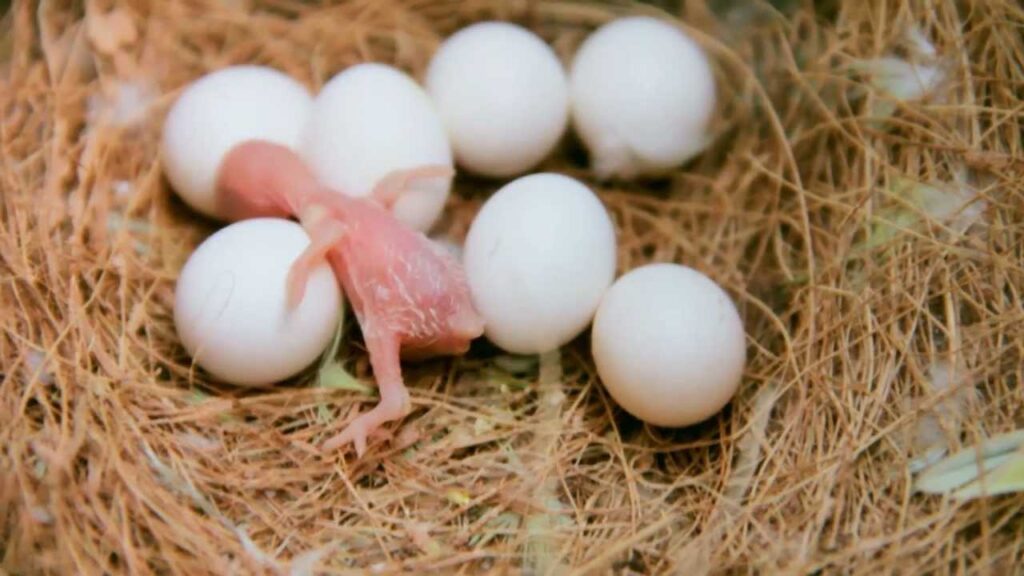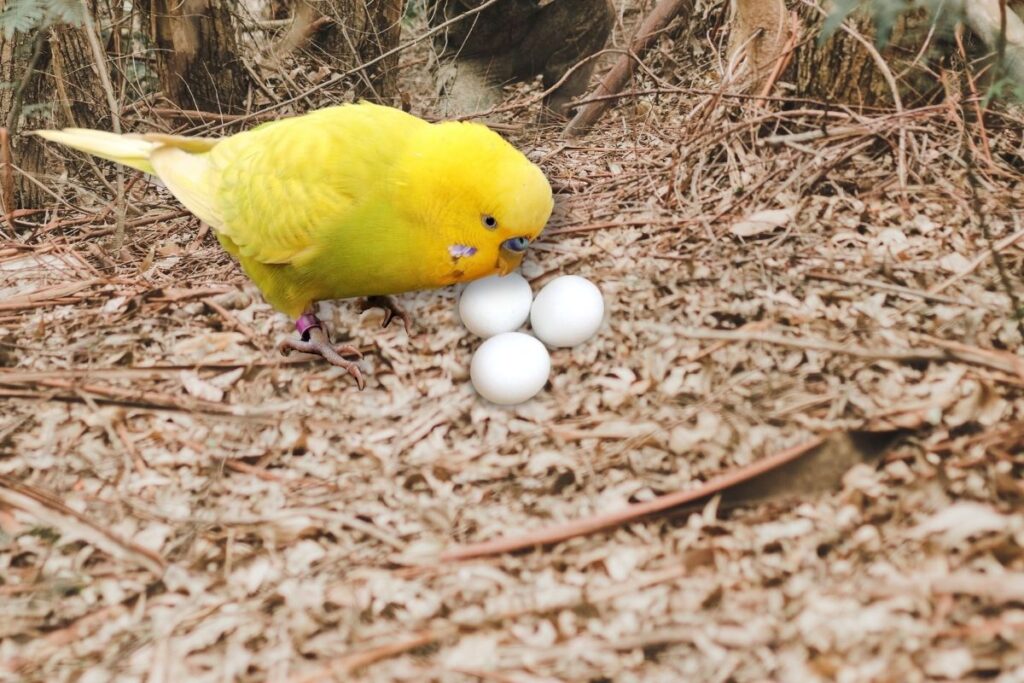Breeding Parakeets || Step-By-Step Guide And Answers
Are you interested in breeding parakeets because you have one? I’m here to tell you, though, that it’s simpler than you would imagine. A male and female bird, some nesting material, such as shredded newspaper or straw, an incubator, and saintly patience are all that is required!
You can learn everything you need to know about breeding parakeets in this blog post, along with the answers to any queries you might have. Because novice pet owners are unfamiliar with the indicators to look for in their birds, mating can be challenging. Parakeets eat list
Finding out your bird’s gender and proceeding from there is usually the first step in establishing whether it has attained sexual maturity. Use the Table of Contents box to skip to the section you need because this essay goes into great detail and addresses a lot of frequently asked issues about breeding.

Questions for Pre-Breeding Parakeets?
Choosing Your Parakeets’ Breeding Goals
Think about the advantages and disadvantages very carefully before deciding to pair up your budgies. If you’re in it for the money, you may need to be prepared for disappointment; if not, it’s a beautiful experience that will only get better with time.
Pet retailers purchase their birds from a huge network of breeders, wholesalers, and distributors who all closely regulate the cost to maintain minimal overhead, which is why we advise you might have to be ready for disappointment. Parakeets eat fruit
Birds are bred for less than it would cost to feed their parents in the expanding pet bird market. If you don’t have a wide range of colors that sell for just a little bit more than the average colorful bird, you can’t compete with them.
A firm that deals with animals are subject to a wide range of legal obligations, including inspection by agricultural officials and local and state permits. You will also have ownership fees to pay if everything is done legally and correctly.
You might not be able to breed any birds for sale in some places. If your locality does permit it, you must first check the zoning regulations before starting this process. Or perhaps you had intended to breed parakeets as a pastime.
Have you given any thought to what would happen if your parakeets gave birth to five or six offspring?
Do you have enough room and money to care for everyone?
What Advantages Come With Breeding Parakeets?
A wonderful technique to produce one-of-a-kind and priceless birds for the globe is to breed parakeets. Among these advantages are:
- Development of parakeet study
- Unavailable through bird shops or pet stores are breed rarities and color variants at this time.
- Over time, it’s possible to discover a lot of new parakeet species.
- The opportunity to actively breed with your own original breeds
- To find comfort in taking care of animals during stressful or sad times. One of the rare animals that can offer everyday company and affection for life without expecting anything in return from humans is the parrot. They only want a light to sit on your shoulder while you do housework, but they can perform some remarkable tricks on demand.
- Breeding promotes new mutations of many kinds, such as variations in size or feather color. Mixing up some popular hues or taking a chance with something odd among the pairings is a nice idea.
- Another advantage is that breeding parakeets are a wonderful method to teach kids about the cycle of life if you have kids. You just need to put in a little time, patience, and work. However, they don’t need to put much effort into it in order to learn everything. They must learn about parakeet breeding while becoming closer to you and receiving something priceless that money cannot buy!
How Can You Tell When Your Parakeets Are Prepared For Mating?
When parakeets reach sexual maturity, they are prepared for mating. In general, the maturation rates of many birds vary. Therefore, before attempting to breed them, you should learn more about the particular species and breeds. A female’s actions and looks will typically make it clear when she is regarded as ready.
For instance, she might spend the entire day looking for a mate in a male’s territory, or she might persistently pursue any nearby guy. If she doesn’t demonstrate ready behavior, mating shouldn’t take place because doing so would simply make the male frustrated and maybe dangerous for both himself and the female.
When females start to show signs of readiness, the birds around them will start acting considerably more aggressively than usual toward these females. It would result in conflict between men who are trying their best. Parakeets eat strawberries
Mature and breeding-ready indicators include:
Violence
There are many different ways to be aggressive. This includes defending their cage with aggression and biting the individuals who own the bird. In birds, males tend to be more aggressive than females, though this isn’t always the case. At times, a woman will be more aggressive than a man.
Biting
Mature birds may bite their humans in order to defend the cage and themselves. The bird may also bite back because it is envious of other people who give attention to its owner or because it doesn’t like the people they are with. This biting can occasionally become so severe that a mature bird will strike if he feels like someone is trying to steal his mate.
Even mature birds have been known to bite when threatened. Their eyes may widen and their tail may begin to fan quickly back and forth, indicating that they are going to bite. The owner runs the risk of having the bird bite them if they don’t stop what they’re doing.
Show Behavior
In the late winter or early spring, your bird may be courting a mate if he begins strutting, singing, and flapping his wings. The crest on your bird’s head will also rise at this time if it has one.
Do Your Parakeets Have Enough Health For Breeding?
Make sure your parakeets are healthy if you intend to breed them.
- To start, carefully examine their beaks and nails for indications of infection or damage.
- Furthermore, healthy birds should not lose weight, show signs of feather plucking, or alter their posture.
- Additionally, you must attend your scheduled vet visits since, in addition to being a sign of general health, active bird immunizations are crucial for preventing various diseases.
- Vaccines do not last forever, and you might need access later for specialized examinations. Consequently, there is a schedule where the booster doses are administered every six months or twelve months as needed.
- You can begin the mating process once everything has been examined and appears to be in good shape.
How Exactly Do Parakeets Mate for Breeding?
The aspect of the human mating process that is most mysterious is certainly this one.
Nevertheless, how do parakeets actually reproduce?
Many people are curious about how male parakeets breed since they lack “private parts.” The sperm of the male parakeet is created in reproductive organs that are deeply embedded in the body and are then released into the female during copulation, often known as “cloacal kissing.”
How Frequently Should I Breed My Parakeets?
You shouldn’t breed parakeets too frequently. High levels of inbreeding and frequent breeding can cause problems such as egg binding, stillbirths, and diminished fertility.
What Time Of Day Is Best To Breeding Parakeets?
There is no specific “optimal” season for breeding parakeets, however, for the healthiest hatchlings, it is advised that your female parakeet be at least 1 year old and under 3 years old.
Sit your birds close to one another in the same enclosure when you’re ready; they’ll either mate or not and will pretty much immediately let you know if that’s what they desire. It may take several attempts before even one egg successfully hatches because it might take up to four weeks from mating until kids are seen.
Generally speaking, variables like food availability, daylight hours, and weather can affect an animal’s egg-laying or breeding cycle.
As a result, it actually depends on the particular situation and your objectives.
Preparation For Breeding Parakeets?
Getting Ready for Breeding Season
- It’s crucial to create the ideal habitat so parakeets can nest in order to get ready for the breeding season.
- A birdcage with at least 20 inches of height and lots of perches and sleeping areas is required.
- It ought to be well-lit but not overheated.
- If you want your parakeets to reproduce in the future, put them back in the cage at night; otherwise, let them go outdoors to spend the night.
- Make sure they have spill-proof food and drink containers, filled water bottles, and climbing plants or branches.
- Make sure to clean their cages once a week!
Mating practices and behaviors of parakeets
Parakeet males
Male parakeets chase female parakeets or do a “tail stand” to show their behavioral interest. Male parakeets engage in courtship behavior to entice females with their puffed-up chests and flashy feathers. For this reason, they also make vocalizations like an “alarm call.”
A male parakeet would also frequently perch close to other males or flock members to demonstrate his supremacy. If while attacking him, he made another man feel particularly intimidated by repeatedly making the intruder cry. Quickly beating the other bird’s wings, wing-rattling, or pecking at it from front to back in a furious manner.
Both the first choice of a nesting site and the attention of females, when they are fertile, are given to the person who rules the region.
Parakeet females
Although they do not need to, female parakeets frequently choose a male parakeet to mate with. They frequently exhibit courtship behavior and vocalizations to demonstrate their interest.
Buying a pair of parakeets so they can breed
A breeder is an ideal place to buy parakeets. The parents will be present at a respectable breeder, typically in sizable aviaries or flights.
Always check references and compare prices before making a purchase, no matter what. Remember that excellence may cost more upfront. It’s crucial to visit a location that has proven trustworthy over several generations of buyers and dealers.
Some queries to put to breeders or proprietors of respectable pet shops:
- When did you start raising parakeets?
- What is the health guarantee for your parakeet?
- Are the parents there and accessible to me?
- How often do the parakeets receive fresh water, where do they spend the night, and what do they eat?
Check To See If Your Parakeets Are Related!
Make sure the two parakeets you choose to mate with come from distinct family branches. Since one of them is typically a male and the other a female, related birds will frequently breed with one another. If any of their infants survive at all, this could result in all kinds of issues with them like disease or malformations!
However, if a parakeet’s parents were different persons (like grandparent-grandchild). Therefore, when these birds breed together, there may be a reduced risk for those kinds of birth abnormalities.
How Much Food Does a Female Parakeet Need to Eat a Day While Pregnant?
A pregnant parakeet needs one tablespoon of fresh fruit per day, such as apples or grapes. Additionally, the female should receive 1/2 tsp of nut butter and seeds daily. The recommended daily intake for men is 3-and-a-half teaspoons of nuts, peanut butter, or seeds.
Your birds will need more dark leafy greens if you live somewhere where the winters are extremely chilly because the colder months cause them to lose vitamins A and E. You can feed your female parakeet safflower, which is a source of fat and a favorite food of parakeets.
Breeder diet for parakeets
The two pillars of a breeder’s diet are abundance and variety. They are more likely to head to the nest if your couple has access to plenty of nutritious food. Soft food is essential for getting a pair into breeding circumstances and is also needed by the pair to feed the chicks. By providing these meals prior to breeding, you can ensure that your pair will quickly consume them when the chicks hatch.

This diet needs to consist of:
Mixture of premium parakeet pellets: Every bite of a pellet provides balanced nourishment. Keep them accessible at all times.
Leafy greens, fruits, and vegetables that are fresh and organic: Kale, Swiss chard, broccoli, carrots, peas, maize, apples, bananas, roasted sweet potatoes, and bell peppers are other excellent options. Additionally, sprout blends are very nutrient-dense. Before serving, wash and cut these ingredients.
Boiled, chopped eggs, or processed egg products: Eggs offer an additional source of protein and are a soft food that digests quickly, allowing the male to feed the female and the latter to feed the chicks. To give the hen more calcium to assist avoid egg binding, chop the shells up with the other eggs.
A mixture of premium parakeet seeds: Seed is necessary for parakeets, although not as the main component of their diet because they frequently choose the foods they want. A blend with a variety of seeds and grains is preferable, or you can choose a hulled product like Lafeber Nutri-Berries, which also contains omega-3.
Abundant, pristine water: Harmful bacteria thrive in contaminated water. At least three to four times every day, or whenever it becomes dirty, the water should be changed.
After two to three hours, discard the soft, fresh food and replace it with new food to prevent the birds from eating anything that has gone bad.
How Can You Prevent Them From Mating or Breeding?
It is advisable to keep the female isolated from other birds if you do not want them to mate; otherwise, you risk having a critically damaged bird. When a male parakeet wants to mate, he usually becomes very aggressive!
Breeding Parakeets: A Guide

Common inquiries about the health and mating of parakeets have been addressed now that you are fully aware of the breeding procedure. You must this information to begin the breeding procedure. The cost breakdown for the materials required, such as the cage, nest box, etc., will come after this.
Make sure your parakeets have bonded properly.
If two parakeets are introduced correctly and are in the ideal environment, they will bond and develop a friendship. You might discover that a pair of parakeets who seem to be bonding and getting along are actually two males or two females. Knowing the distinctions between the sexes will help you avoid wasting time.
The good news is that they are easily distinguished because of their sexual dimorphism, which means that there are minute variations in size, tail length, color, and other physical characteristics that can help you identify gender.
Parakeet males
The parakeet is male if it has a blue cere and entirely blue nostrils. These males have some gorgeous patterns that make them appear to be tiny gems!
Parakeet females
The female parakeet’s cere is a pale blue tint. Her nostrils have brown rings that you can see. These indicators of maturity show when she has reached sexual maturity, something you won’t observe in guys.
If you look closely at her care for any anomalies like lumps or nicks that may have been more noticeable during childhood, you can observe that the texture of her cere gradually becomes harsh with age.
Whether or not they breed will depend on how well they have bonded.
As was already established, the secret to your parakeets getting along is how you introduce them. Their connection as a result of getting along is the next phase! Making sure they have adequate areas to play and perch as well as regular access to high-quality food will create the ideal environment for healthy, happy parakeets to bond (and breed).
Once you have noticed your parakeets following one another around and sitting near to one another on the porch. The degree of their bonding is then evidently quite great. This is made clear when males begin feeding females, which only happens once partners have connected.
When two birds mate, they form their closest relationship possible by feeding one another (usually male feeds the female). You will know they are in a sound, monogamous relationship at that point.
Your parakeets will reach breeding age (if they haven’t already) and come of age.
In most cases, parakeets reach maturity at barely one year of age. Examine your female’s care; it should be brown and crusty-looking if she is truly prepared to begin breeding. All that’s left to do is set up their nesting boxes so they can begin to lay eggs. Your male parakeet will start chasing the female around, which will make her agitated and stressed out.
They go through this natural process to ensure that the female parakeet wants to mate with them. They are demonstrating curiosity rather than doing it out of spite or rage. Make sure your parakeets have a lot of sticks of all sizes and types available if they aren’t currently nesting so the female can choose the one she likes most for their nest.
Setup for a Breeding Cage
Use a parakeet breeding cage because the birds will require a lot of room to nest. This typically measures 18 by 24 inches and has perched on both levels (or more). Additionally, you can add some branches inside so that they can construct their nest.
A breakdown of the costs for the bird, the cage, and the extras required to begin breeding them
Birds in a pair (if you do not already own them)
Depending on the gender or species, a pair of parakeets might cost anywhere from $20 and $50 apiece. However, you can locate less expensive solutions by browsing pet shops, internet classifieds, and pet adoption pages.
A maternity cage
Your breeding cage will probably cost you the most money overall. Breeding cages can cost anywhere between $30 to $500, depending on brand and size. In order to offer parakeets enough area to fly around and have a little extra room for food dishes or nest-building supplies, we advise that you buy the largest cage that is practical (and fit for your living space).
If there isn’t enough room in your breeder’s cage for perches, you can also add perches in other places. You should choose the right size cage for parakeets, but make sure it has enough room for them to fly around without feeling crowded.
Food
For your breeding parakeets, you will need a range of food, including seed mix, pellets, and veggies. Particularly for the female parakeet, who lays all the tiny eggs! Keep in mind that the female parakeet needs more calcium for egg development than her mate.
Depending on the number of birds and their food, a seed mix and bird vitamins can cost up to $150 a year, sometimes even more. Similarly, the amount will change depending on if you purchase non-GMO products and include goodies like millet spray.
Perches
There must be sufficient perches for your breeders to rest on. To avoid injuries from the parakeet’s feet gripping too tightly and inflicting harm, the perches should be as wide as possible. It, among other things, can result in infections. Additionally, they will require room to nestle up close and breed! Depending on size, perches are about $20.
Cleaning products (to clean the cage)
Safe cleaning for birds Parakeets are susceptible to respiratory infections and other illnesses, thus materials to maintain a continuously clean cage are crucial. This is a great cage-cleaning spray that is safe for birds. However, in average, a 16oz spray bottle will cost you between $10 and $15.
Live plants, artificial plants, or both are acceptable for the cage.
Live or fake plants are fine in a parakeet’s cage, but keep in mind that the plastic ones will need to be replaced with new ones every few months as they wear out from use.
Boxes for nesting
One of the most significant investments you will make in your breeding cage setup is the nesting box since parakeets mate in the nesting box. The finest nest boxes to use are those that can be easily disassembled for cleaning and feature a hole on each side. 12″ by 12″ is an excellent size. Nesting boxes like this small wooden one are readily available and cost less than $20.
Nesting stuff
Additionally, you’ll need to buy nesting materials like softwood shavings, shredded paper, etc. As long as it is non-toxic, you can use anything.
Care of Parakeet Eggs: Breeding Parakeets?

We will attempt to address the most frequent queries new parakeet owners and aspiring breeders have about caring for parakeet eggs in this area.
What Might Take Place If You Don’t Keep Up With The Eggs And Chicks?
The hatching rate will decline if you can’t keep up with the eggs and chicks. Additionally, if you let your bird’s food supply run low, you put them at risk for a variety of issues. Malnutrition is closely linked to symptoms like abnormal heart rhythms, quickly rising blood sugar levels (D-glucose), panic episodes, and abrupt death.
All of these are nasty symptoms that can appear suddenly and unexpectedly due to overworked kidneys and impaired brain function. This already vulnerable bird’s health will quickly deteriorate under the strain placed on its organs.
What Should You Do If Your Bird Lays One or Two Eggs But Doesn’t Properly Incubate Them?
Even while it doesn’t happen very often, it does happen occasionally. When a bird lays an egg but is unable to adequately care for it, the nest is completely abandoned. It urgently requires help if it can’t manage to stop the cycle of starting afresh. This is due to the fact that eggs are typically laid one at a time each day, therefore two eggs may not be laid for four or five days. If eggs are not incubated, they will not hatch.
However, unless you have an incubator to place them in to warm them, leave them where they are in the nesting box most of the time.
When Your Bird Is Laying Eggs, How Do You Know?
In reality, determining whether your parakeet is laying eggs is not simple. An egg in their enclosure would be the most obvious indicator. But if you find that your little parakeet is feeling much heavier than usual and has a lumpy appearance on the underside. It might be egg-laying season right now!
Visually inspecting the cloacal area to see if there appears to be an opening that would indicate she is ovipositing would be a less obvious way to detect.
What Can I Do If My Parakeet Lays An Infertile Egg for Breeding?
You must be able to distinguish between an infertile egg and a viable egg. Consult a veterinarian or avian expert if you’re not sure or want confirmation. Age and adolescent damage are just two of the many why parakeets may deposit sterile eggs, but there are many others as well. Or adulthood, which has affected the hormone production required for conception.
If there is any doubt regarding the reason for infertility, a veterinarian should be consulted before administering treatment. If it is discovered that your parakeet has been laying eggs that are empty for some time without becoming pregnant at any point in the past. She may simply not be able to have children at this time.
My bird used to lay eggs just fine; why can’t she do it now?
Egg binding is a condition that frequently contributes to problems with egg production in pet birds. Egg binding happens when your bird’s oviduct becomes blocked while trying to send an egg down it, preventing it from ovulating. The hen will typically attempt to relieve her agony by excessive feather plucking or self-mutilation when an egg becomes lodged.
In the vicinity of the vent, check for things that resemble eggs but are hard or distorted to identify an oncoming case of egg binding. They will have various shapes and perhaps have something yellow or green on them (the contents of the inside of the area that was being blocked).
Additionally, if they have been trying to pass the egg for some time, you might notice foam on their feathers around their vents. Contact an avian veterinarian right once if you think your parakeet might be experiencing egg binding, or start giving calcium supplements orally to stop additional harm. If there are indications that an infection has taken hold and it will take days before symptoms appear, you could also need medicines.
Can I Determine Baby’s Gender From the Color of Its Eggshells?
Regrettably, no
Unfortunately, neither humans nor birds can accurately determine a person’s gender based on the color of their eggshell! By examining an animal’s DNA in the embryonic tissue inside the egg, it may be able to identify the evolutionary sex of that particular species. However, this is not true for people and it also does not apply to birds as well.
Do I require an incubator, or can I simply use an egg carton stored in the refrigerator?
You must be utilizing an incubator. Under-incubated embryos are all those held at temperatures below 100° F (37.8° C). The chick will probably never hatch, or if it does, it will probably grow poorly or give birth to a stillborn baby. You can get an electric incubator and, for the greatest results, follow the directions that came with it if you wish to hatch chicks from your eggs.
Should I Handle the Eggs of My Parakeet? Breeding Parakeets?
You shouldn’t handle the eggs of your parakeet. When the eggs are handled, the membrane may deteriorate, causing the egg to shatter and kill most, if not all, of the frogs inside. This only differs if you need to turn the eggs when incubating them. Don’t even touch the eggs if you’re not incubating them.
Should I Keep My Parakeets Separately Or Together After Breeding?
The simple solution is to keep them together because their link will provide them with more mental stimulation. I do want you to think about a few things when maintaining parakeets, though.
- You can keep the parakeets together in one aviary or cage if it’s big enough and has enough perches, food dishes, water bowls, and seed cups.
- You might wish to separate them or get a bigger cage if their current one is too tiny or crowded.
- It is best to separate your parakeets if they appear to be fighting.
Having said that, parakeets are highly social creatures, and they thrive in groups. Parakeets are extremely gregarious creatures and thrive in groups. That implies that you should have at least two, however, more is preferable. Being very intelligent, they require regular stimulation and interaction—not just with other birds, but also with people.
When they hatch, will my parakeet start devouring its own young?
Nope
First off, by eating her eggs after they hatch, your parakeet won’t cause any harm to her young.
The second thing you must do is check on Mommy to make sure she is getting enough food and water and is not becoming overly anxious.
When a bird is unable to locate food or becomes very anxious, it may begin pecking at its young. However, your cherished pet shouldn’t have difficulty eating its eggs if the environment is good for mommy.
Mother trying to eat her eggs too soon is the most crucial sign to watch out for since it either indicates that she is overly anxious or that she is actually hungry and wants to eat. Generally speaking, parakeets are decent parents and will only begin to consume their eggs if they are in serious nutritional or food need. Compared to most birds, momma parakeet is a little more reliant on human assistance. Therefore, be sure you have adequate time to keep a close eye on her throughout the next weeks.
Parakeets Newborn: Breeding Parakeets?
We will attempt to address the most frequently asked questions about neonatal parakeet care that new owners and prospective breeders have in this area.
Advice for Raising Young Parakeets
Here are some suggestions for caring for your baby parakeets. Just like their young, parakeets are delicate and brittle. Keep the nest low in its cage, and provide it with clean, fresh material to lie on (no chemicals or dyes). Put some gentle cloths around the nesting box so it can fall out safely, but exercise caution while handling these young ones because they’re still extremely vulnerable! If you end up having to take care of your newborn parakeets on your own, you’ll need to understand the most crucial part of care: feeding.
What Should Baby Parakeets Eat?
What are young parakeets fed? Newborn bird formula must be given to your baby parakeets.
Feeding Baby Parakeets by Hand
Until they are mature enough to eat seeds and drink water on their own, young parakeets can be hand-fed. Only if you have a large litter or the mother parakeet isn’t feeding them will you need to hand-raise your baby parakeets.
How Frequently Should Newborn Parakeets Be Fed?
You should hand-feed your baby parakeets every three hours between the ages of two and three weeks. A parakeet should be fed every four hours after it is three weeks old. And after six weeks, you can begin cutting back on feeding times to five hours per day. Keep in mind that the frequency of feeding parakeets will vary depending on their age and rate of growth.
How many different formulas ought to be given to baby parakeets?
Your baby parakeet should receive 2 to 3 ml of formula every feeding when it is two weeks old. After that, you should increase it to 3 to 5 ml of formula in week three.
How Can You Tell If A Baby Parakeet Is Ready To Eat On Their Own?
When they are about four weeks old, parakeets can begin eating. This is mostly based on how each person is feeling. For instance, a parakeet may be ready for ordinary food earlier than what is stated above if it has adapted well to its new home and has ingested a lot of formula milk.
The first several weeks will see some variation in feeding times, but as they gain strength and start to develop feathers, the feeding schedule should improve and become more reliable. When feeding begins, it often only lasts 5 to 10 minutes since their little tummies require that quick rest.
FAQs: Breeding Parakeets?

How long does the parakeet breeding process take?
Although parakeets are physically capable of reproducing as early as 6 months old, this should not be permitted until they are at least 10 months old. A younger bird won’t be able to provide for its young well. There is no need to rush because once they are grown, men and females can reproduce for four and six years, respectively.
How frequently do parakeets lay eggs each year?
Finishing up. If everything is done correctly, your parakeet should lay two clutches per year, with each clutch averaging between four and six eggs. However, keep in mind that not all eggs will necessarily prove to be fertile.
How many young do parakeets produce?
Like many other bird species, parakeets frequently lay one egg every other day until all of them have been placed. There are typically four to eight eggs in each clutch, though this might vary.
Can I handle the eggs on my parakeet?
It could also be because the owner of the bird handled the egg, which has since lost its personal scent. When handling the eggs, always wear clean gloves. Better yet, avoid touching the eggs altogether.
Should I remove the eggs on my parakeet?
The egg won’t be fertilized unless the hen had contact with a male bird before laying the egg or eggs. In this situation, the majority of bird owners remove the egg from the cage and discard it.
When does the parakeet breeding season begin?
Although some birds lay their eggs as late as June, they frequently begin building their nests in January. Due to the early start of the breeding season, there is a large selection of potential nesting places and low competition for available holes.
Do male parakeets raise their young?
No, birds don’t operate in this manner. Like other bird species, budgies have lifelong partners. Both sexes contribute to the care of the chicks and the incubation of the eggs. They occasionally alternate sitting on the eggs, and on occasion, the male will assist the female by feeding her just like her mate would.
How do I handle a parakeet that has laid eggs?
The best course of action is to let them sort things out on their own. To attempt to hatch the egg manually, you would need an incubator, and even if the eggs do, it is challenging to hand-feed a budgie chick from day one.
How old must you be to handle newborn parakeets?
Beginning at the age of two weeks, children should be handled and held frequently. It’s acceptable to softly examine the chicks shortly after hatching if you’re gentle and the parent birds are accustomed to your presence.
When may I handle young parakeets?
By the time they are 7 to 8 weeks old, budgies are prepared to leave their parents. Any budgie that is younger than 16 weeks old is a baby and a good candidate for talking and finger-training. To prevent him from hurting himself while you are getting to know one another, request that his flight feathers be clipped.
Conclusion: Breeding Parakeets?
Although raising parakeets for breeding can be a fun and rewarding experience, it’s vital to wait until you’re ready. You can use the advice we’ve provided to determine when they’re ready for breeding, how frequently they should be bred, how frequently they mate, and more! Please feel free to leave a remark if you have any questions or require any extra information on the subject of breeding parakeets.





